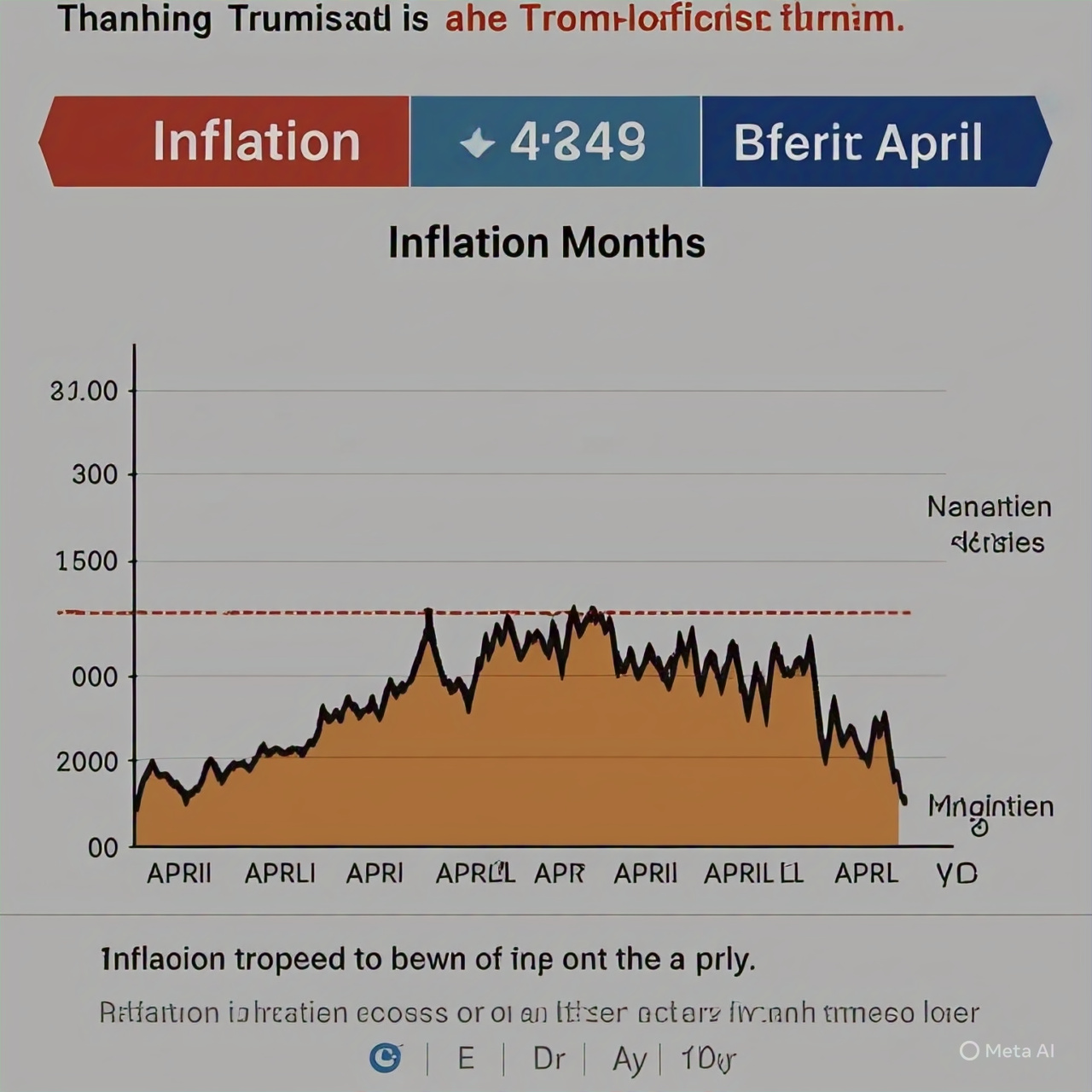Inflation softened to a four-year low in April as the just beginning effect of President Donald Trump’s broad tariffs were counteracted by their cost-reducing effects in a decelerating economy.
Consumer prices in aggregate were up 2.3% from a year ago, reduced from previous month’s 2.4% increase, as per the Labor Department’s consumer price index, a gauge of average changes in the cost of goods and services.
That’s the lowest annual increase since February 2021 but still leaves inflation moderately above the Federal Reserve’s 2% goal.
On a monthly basis, costs rose 0.2% after dipping 0.1% in March.
Prices for groceries, including eggs, used cars and airfares all fell sharply, while medical services and auto insurance and repairs continued to drift higher.
The report captures the economic uncertainty unleashed by Trump’s retaliatory tariffs just as they were taking effect but only partially represents the estimated spike in cost.
Additional obfuscating the scene: the Trump administration declared a 90-day hiatus on the highest tariff rates for dozens of nations in early April and also an equal temporary agreement with China on May 12 that provides time for the two to continue negotiating.
The report gives a snapshot of consumer prices at the very moment Trump’s retaliatory tariffs were taking effect, capturing the economic uncertainty they created but only partially capturing the anticipated spike in costs.
Blurring the picture further: the Trump administration proposed a 90-day halt in the maximum import tariffs on dozens of nations in early April and a parallel China truce on May 12 that permits the two sides to continue negotiating.
What is core inflation?
Core inflation, which leaves out volatile food and energy products and is closely monitored by the Fed since it paints a more durable picture, rose 0.2% after rising 0.1% in March.
That maintained the annual rate at 2.8%, the lowest in four years.
Do tariffs influence inflation?
Economists were divided as to whether the tariffs pushed inflation up in April. Barclays said it was too soon for the charges to pass through into prices.
Wells Fargo explained “the reality of tariffs will likely have begun to affect pricing decisions” but business attempts not to offend customers and uncertainty over Trump’s changing policies probably resulted in only a modest increase in prices.
Goldman Sachs expected some impacts on products “most exposed” to tariffs on Chinese imports, like clothing and cell phones.
There were some indications that tariffs have begun to push prices higher for Chinese-produced goods last month, said Capital Economics and Pantheon Macroeconomics. The price of audio gear rose 9%; photography gear, 2.2%; furniture, 1.5%; and computers and peripherals, 0.7%.
Clothing prices, however, fell 0.2%.
Prices of used cars fell 0.5% but their prices are set to soar in a matter of months as an incoming 25% tariff on foreign cars increases demand for used vehicles, economists indicate. Wholesale prices of used cars are already increasing.
Meanwhile, tariffs have fueled recessionary fears and boosted uncertainty. Last month, jitters weakened consumer demand and decreased prices for gas and travel-related services, economist Ryan Sweet at Oxford Economics explained. The same dynamic occurred in February, as airline ticket prices dropped 2.8%, the third consecutive steep decline, and hotel rates dropped 0.1% after a decline of 3.5% in the previous month.
What is the deal between China and the U.S.?
Meanwhile, the United States announced on May 12 it was cutting the tariffs on imports from China from 145% to 30% as China cut its levy on U.S. shipments to 10% from 125%, sparking an enormous stock rally.
Nationwide Chief Economist Kathy Bostjancic put the 30% tax on China and 10% tax on other nations at driving inflation to 3.4% by the end of the year, although that’s lower than her original 4% projection. Retailers and manufacturers will likely retain the majority of the fees by charging consumers higher prices, draining consumer purchasing power.
In a research report, RBC Capital Markets economist Michael Reid wrote that the U.S. average tariff rate is currently 13%, compared with 24% prior to the May 12 news of the truce with China. But he added that the agreement “does little to assist in returning inflation’s direction to 2% as a 13% effective tariff rate is still close to 5 times the 2.4% rate observed in 2024.”
How quickly will the Fed cut interest rates?
A more gentle-than-expected inflation reading probably might take a cue from the Fed to think about cutting interest rates as early as next month. But with a tariff-driven inflation spike still on the horizon, that’s unlikely, economist Stephen Brown of Capital Economics says.
While the moratorium on duties for Chinese imports might temper the potential inflation peak, it also might equate to a relatively stronger economy that avoids recession and provides the Fed with room to wait longer to measure the impact of the fees.
Fed fund futures markets have extended their projection for the Fed to roll back its market-friendly rate reductions from July to September. Capital Economics expects the central bank to wait until next year before cutting rates.
Will egg prices fall?
Egg prices dropped 12.7% following a flurry of price hikes tied to an extended bird flu epidemic. The emergency has dissipated lately, lowering wholesale prices that had threatened to lower retail costs. Egg prices remain higher by almost 50% over the last 12 months.
Food prices generally dipped 0.4%, mainly canceling out a 0.5% gain in February. Breakfast cereal dropped 2.5%; rice, 2.3%; chicken, 0.3%; and bacon, 1%.
Other essentials became slightly more expensive, with bread increasing 1.6% and fresh fish and seafood rising 0.8%.
Eating out also kept getting costlier. The price of food away from home increased 0.4% for the third consecutive month and is up roughly 4% over the past year, as pandemic-driven labor shortages and compensation increases continue to drive up restaurant prices.
Why are gas prices falling now?
Gasoline prices fell 0.1%, the third consecutive monthly decrease, and are 11.8% lower in the last year. Regular unleaded cost $3.14 a gallon on May 12, down from $3.20 a month earlier, AAA said.
Oil prices have fallen sharply this year amid concerns that the trade war will weaken the global economy, placing downward pressure on gas prices. In addition, OPEC nations agreed to boost oil production beginning in April.
Will rent continue to rise?
Rent increased a fairly modest 0.3% for the fourth month, maintaining the year-over-year increase at 4%, the lowest since January 2022. Newer lower rents are finally making their way into prices for existing renters.
Housing expenses have been the largest driver of inflation, accounting for 35% of total price growth in April.
Other service prices inched up. Auto insurance premiums rose 0.6%; auto repairs, 0.7%; and medical services, 0.5%.

